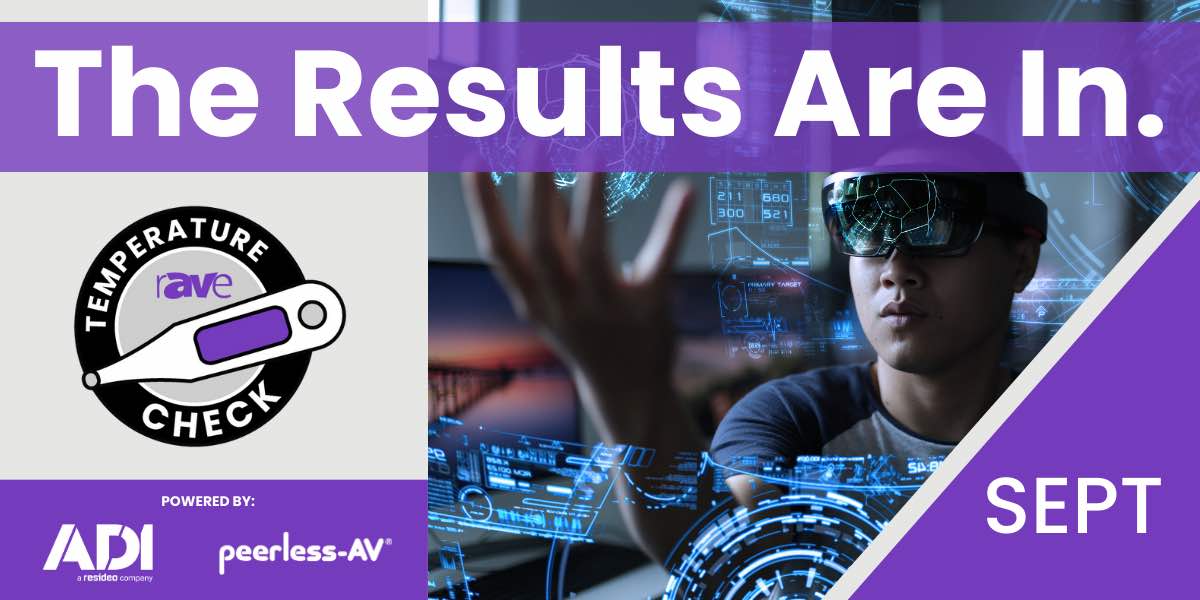
As September comes to a close, it’s time to break down the results of our latest Temperature Check. This month, we focused on how prepared industry professionals feel when integrating emerging technologies into their future projects. Let’s dive into the results and see what you all had to say.
For our first question, we asked our audience how prepared they feel to integrate emerging technologies into their current workflows. While 47.6% felt “somewhat prepared,” only 18.6% felt “very prepared,” which raises some interesting questions about if manufacturers and integrators could be doing more.
Meg Athavale, founder & CEO of Lumo Interactive Inc., pointed out that constant need to relearn technology has made it challenging for professionals to keep up. “Technological innovation has been accelerating at an increasing rate for about 30 years, and it’s not uncommon for industry knowledge to be utterly useless or completely replaced in less than a decade,” she said.
Mark Coxon, director of business development at AVI-SPL, believes staffing and training is an important factor in this. “Many integrators feel unprepared because of the implications it has on their staff and training… employees are highly utilized delivering work and don’t have time for training,” he said. Coxon also noted that uncertainty around AI’s impact on workflows adds to the hesitation.
Next, we asked about which emerging technology you believe will have the biggest impact on the AV industry in the next few years. With 54.3% of you voting on AI and machine learning, we were curious about the most important things integrators and manufacturers need to consider when preparing for this growth.
Athavale thinks that there are three main considerations for integrators and manufacturers. First, it’s important to be cautious about where training sets come from and who owns the data, because legal battles over data ownership could impact end users. Second, understanding who owns the data a solution collects is a crucial consideration. Finally, she reminded us not to overlook the value of human interaction: “Don’t assume customers prefer a lower cost over actual relationships and human interaction.”
“As always, the real value lies in identifying the problems you’re trying to solve and selecting the best tools—whether AI-driven or not—to address them effectively. AI features often offer simpler, more efficient ways to implement solutions, but it’s important to remember that you’re using AI to solve a challenge, not seeking out challenges just to apply AI,” said Dave Hatz, VP of machine intelligence at CTI.
Lastly, we asked you about which areas of emerging technology you are most interested in implementing in your future projects. This brings up the question of which challenges may come up as AI-driven automation and smart collaboration tools become more popular.
Athavale is worried that small companies might lack the tools to protect themselves from the risks of AI tools reselling data. She emphasized the need for stronger data protection laws.
Hatz predicts that integrating AI-powered solutions that are designed to operate independently may cause some issues. “This can create compatibility issues, where AI performance may be at risk if products weren’t designed to work in tandem.”
Coxon highlighted the increased need for integrators to support software and IoT devices, areas that traditionally haven’t been core to AV. He also mentioned that supporting AI automation may require new coding and programming skills that many integrators don’t yet possess.